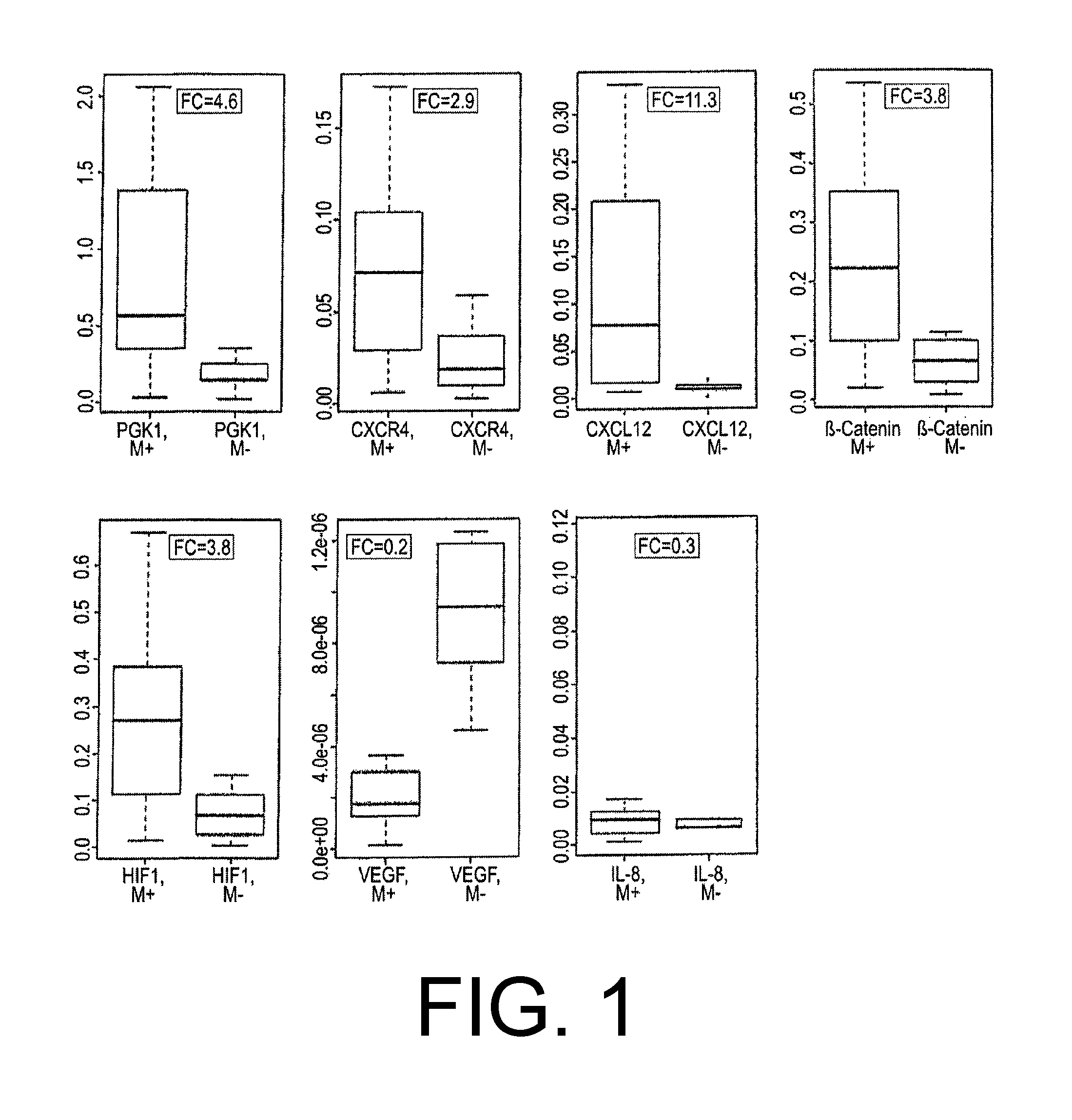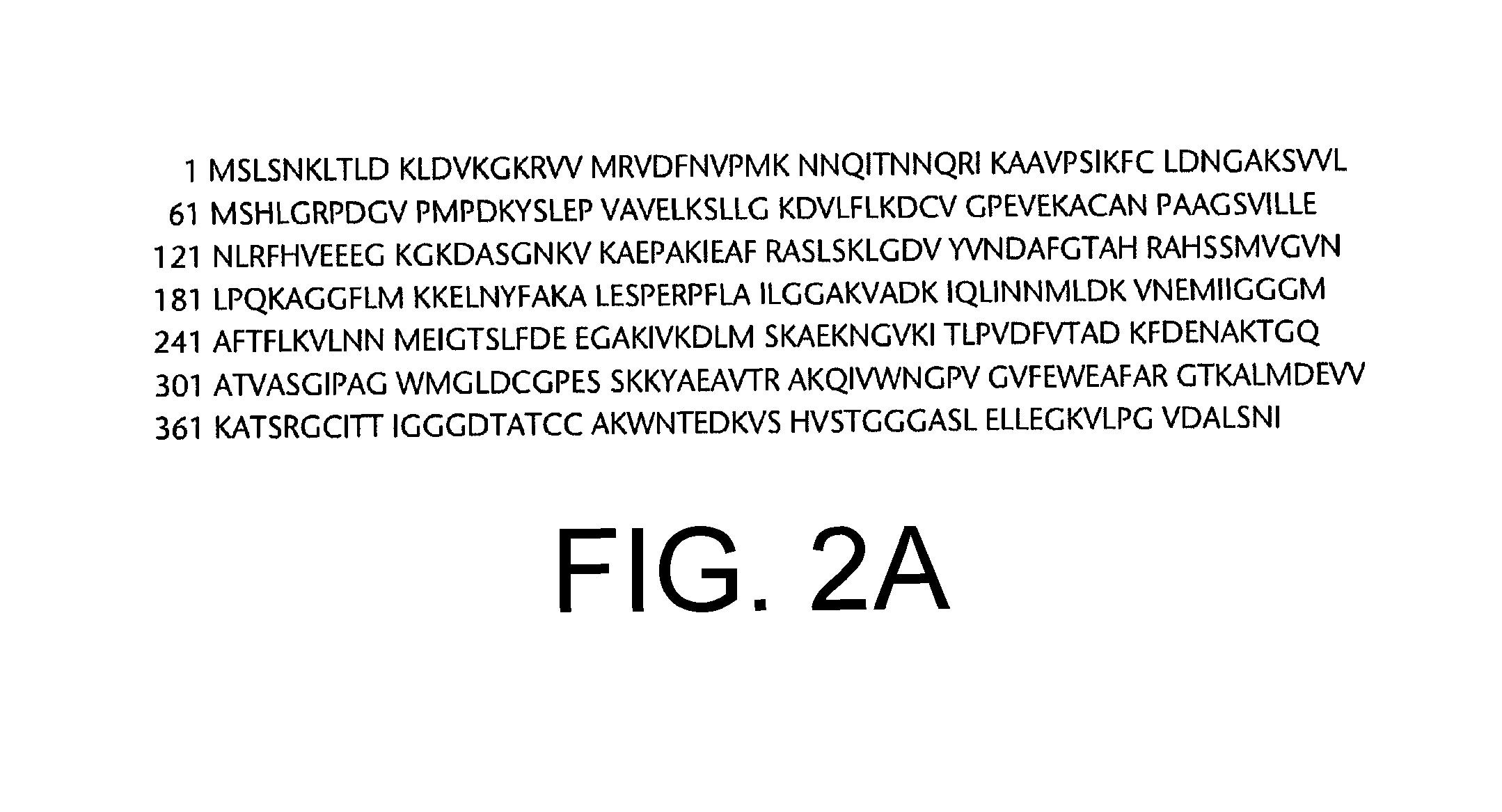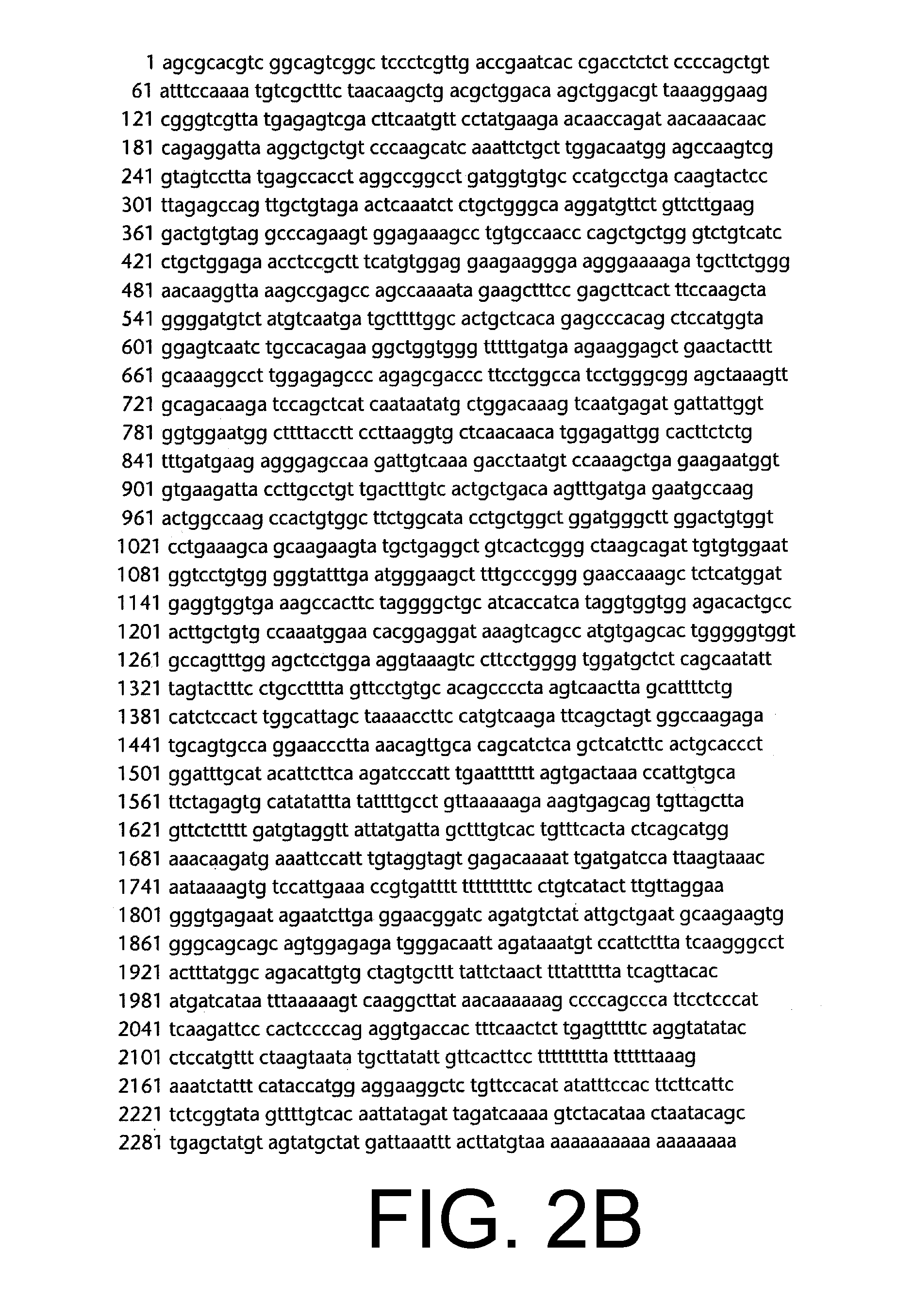Marker for the diagnosis of cancer
a cancer and diagnostic technology, applied in the field of diagnostic markers for cancer, can solve the problems of low survival rate, no known marker available, and often no longer being able to detect cancer cells
- Summary
- Abstract
- Description
- Claims
- Application Information
AI Technical Summary
Benefits of technology
Problems solved by technology
Method used
Image
Examples
Embodiment Construction
1. Materials and methods
a: Patients, Tissue Samples, and RNA Extraction
[0065]Tissue samples from 13 patients (untreated, without any neoadjuvant therapy) with histologically confirmed diffuse gastric cancer who had undergone laparotomy were analyzed. In 8 of 13 patients, peritoneal carcinosis was histologically confirmed (5 female and 3 male patients; average age 58, age range 27-78). In 5 of 13 patients, no peritoneal carcinosis was confirmed (4 female and 1 male patient; average age 70, age range 60-76). All of the tumor samples were collected by the Department of General Surgery, GI Tract and Endocrine Surgery, and Transplantation Surgery, University of Tübingen, Germany. The samples were quick-frozen in liquid nitrogen and stored at −80° C. prior to use. Each tumor sample was cryosectioned, hematoxylin and eosin-stained, classified by two experienced pathologists, and then reevaluated by an experienced surgical pathologist. The RNA was extracted using the Nucleo Spin RNA II kit ...
PUM
| Property | Measurement | Unit |
|---|---|---|
| acid | aaaaa | aaaaa |
| size | aaaaa | aaaaa |
| morphology | aaaaa | aaaaa |
Abstract
Description
Claims
Application Information
 Login to View More
Login to View More - R&D
- Intellectual Property
- Life Sciences
- Materials
- Tech Scout
- Unparalleled Data Quality
- Higher Quality Content
- 60% Fewer Hallucinations
Browse by: Latest US Patents, China's latest patents, Technical Efficacy Thesaurus, Application Domain, Technology Topic, Popular Technical Reports.
© 2025 PatSnap. All rights reserved.Legal|Privacy policy|Modern Slavery Act Transparency Statement|Sitemap|About US| Contact US: help@patsnap.com



